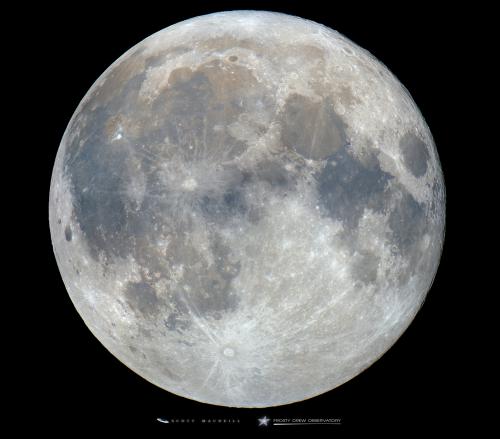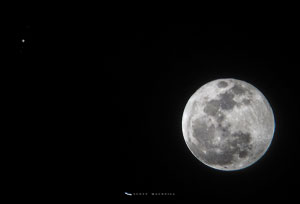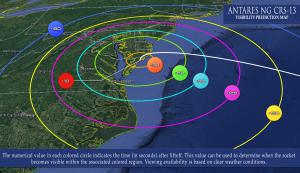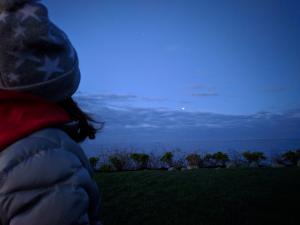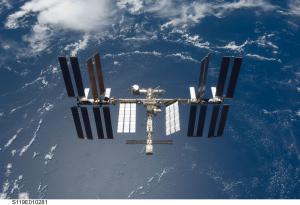Celebration of Space - February 7, 2020
On Sunday morning, February 9, 2020 at 2:35 am the Full Snow Moon will occur, which is the Full Moon for February. Some news outlets are raising a bit of buzz about this full lunar phase by calling it a supermoon. Though at Frosty Drew Observatory, we would not consider Sunday’s full Moon a supermoon. A supermoon is a common term used to describe a full Moon that occurs during the monthly lunar perigee, which is the closest point to Earth in the Moon’s 27.3 day orbit. The scientific name for this occurrence is called a “perigee-syzygy”. Regardless, there is not a formal definition of what constitutes a supermoon, and numerous news outlets have different definitions. At Frosty Drew Observatory we generally will consider a full Moon a supermoon if the monthly lunar perigee falls within 24 hours of the full lunar phase, which is a pretty broad definition. Sunday’s Snow Moon does not meet that condition. That morning’s full Moon will occur 36 hours before the February lunar perigee, which occurs on Monday, February 10, 2020 at 3:32 pm. By our definition, we will experience two supermoons in 2020, the March Full Worm Moon, and the April Full Pink Moon both fall well within the 24 hour time frame. Regardless of what definition you use to declare a full Moon a supermoon, one thing is certain, you would not have noticed any difference if you weren’t told to look.
The full Moon spans about 1° in diameter against the sky. You can completely block the Moon with your pinkie finger held at arm's length (try it). During a supermoon, the full Moon will appear about 14% larger than the micromoon, which is the full Moon that occurs during the monthly lunar apogee (furthest from Earth in the monthly orbit), which happens about six months before/after the supermoon. So the increment in size is very small, roughly about a 2% difference in size from the prior month’s full Moon. As for brightness, the supermoon is about 30% brighter than the micromoon, but the time span is what makes it unnoticeable. A supermoon will be about 5% brighter than the previous month’s full Moon. These small differences are not readily noticeable. What makes a full Moon appear brighter, or bigger, has more to do with the condition of the atmosphere over your location, as well as the height of the full Moon in the sky, which comes down to time of year, and time of night. In any case, if the Moon is your digs, and a supermoon gets you out and looking up, them it’s worth noting! So get out this weekend at take a look at the big, bright *almost supermoon.
This coming Sunday, February 9, 2020 at 5:39 pm EST, the International Space Station (ISS) resupply mission (Antares NG CRS-13) will launch from Wallops Flight Facility in Virginia. This launch will be visible to much of the East Coast US, including some coastal regions of Southern New England. Though only visible over Southwest Rhode Island, the launch will be quite visible for most of Connecticut, with the exception of the northern border and northeast region. Want to catch a view of the launch? Set out for a location in the region of visibility that has a very low view of the south → southeast horizon. About 3 minutes after the launch commences, you will see a fast moving star-like object heading eastward just above the south → southeast horizon. Check out this -> map for visibility predictions.
The resupply launch is carrying around 8,000 lbs of research materials, crew supplies, and station hardware, which will arrive at the ISS on Tuesday, February 11, 2020. If the launch is canceled for any reason, the backup launch date is Monday, February 10, 2020 at 5:16 pm EST. If you are unable to see the launch, you can watch it on NASA TV. If you happen to catch a photo of the launch, be sure to post it on the Visitor Posts section of the Frosty Drew Facebook page and we’ll share it on our timeline.
Tonight and tomorrow night will bring the last notable passes of the International Space Station (ISS) over our region for the current evening viewing cycle. Set your alarms and step outside to catch these passes:
Fri, Feb 7 at 6:52 pm, starting in the W, rising to 22°, heading towards the S
Sat, Feb 8 at 6:04 pm, starting in the WNW, rising to 37°, heading towards the SSE
ISS passes will start up again on February 19, 2020, though only visible in the morning sky before sunrise. So step out this weekend and say goodbye to evening passes of the ISS for the next six weeks. Note, you can get daily pass times applicable to the Northeast on the Frosty Drew website. Passes that are specific for your location can be found at NASAs Spot the Station site.
-Scott
- Author:
- Scott MacNeill
- Entry Date:
- Feb 7, 2020
- Published Under:
- Scott MacNeill's Columns

